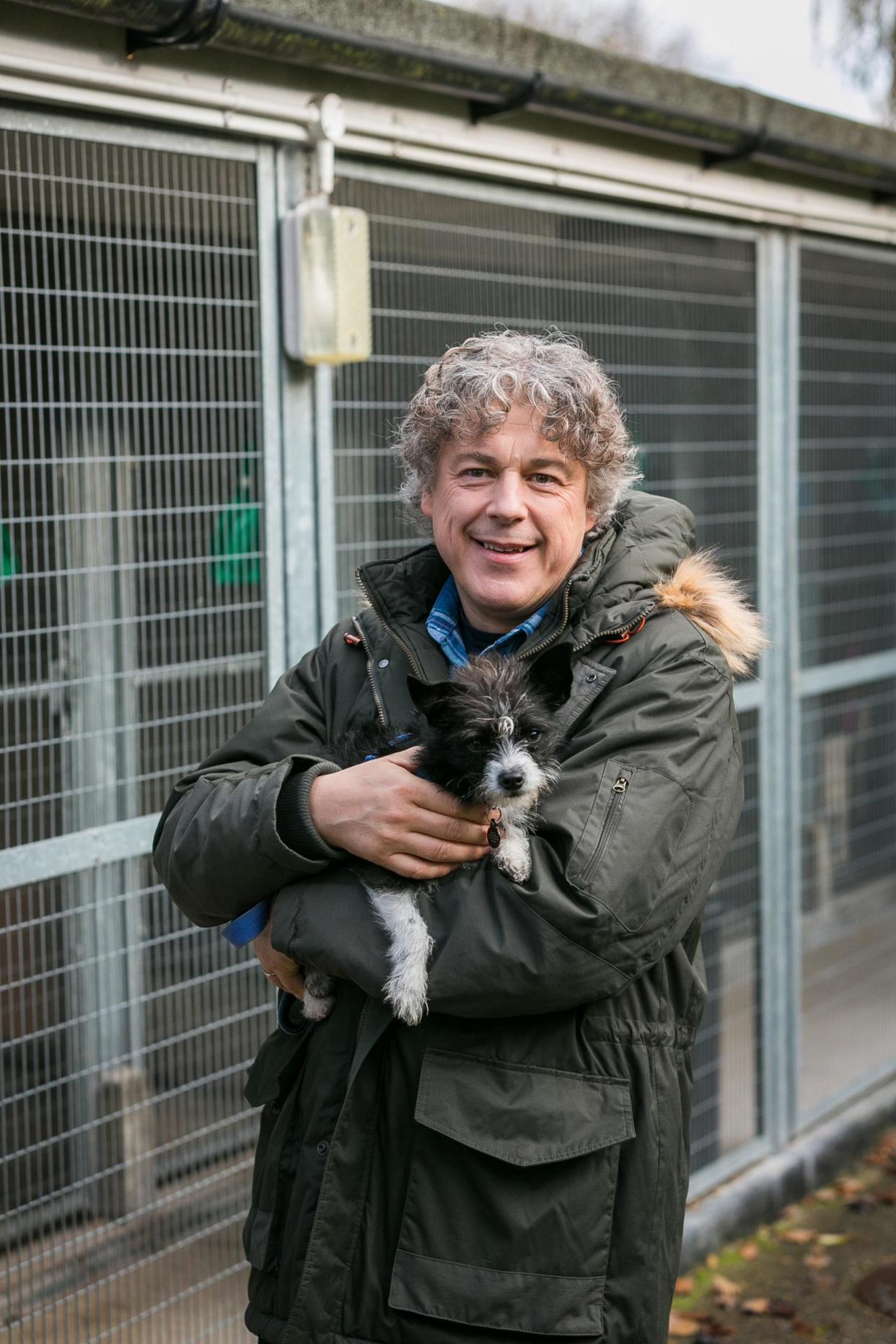TV review, The Dog Rescuers with Alan Davies (Channel 5): Acts of cruelty and compassion make for emotional viewing

Last night I watched pus being flushed out of an infected wound on a dog. And I don’t mean for kicks, either. As the vet pumped as much of the blood and discharge as she could out of the mutt’s neck, some of it hit an RSPCA inspector in the face, and the rest spattered the camera lens, like a scene from a canine version of a Saw movie, but with real blood. And they say telly reviewing is an easy gig. Not when you’ve got to get through The Dog Rescuers with Alan Davies.
The poor old black labrador, Josie, had been living on the streets with her human keeper, and had been in a bit of a dog fight. Noble and stoic through her ordeals, she looked like she’d be more at home patrolling the grounds of some grand Downton Abbey-style estate, or gambolling around the Elizabethan knot garden, say, rather than kipping in a shop doorway on Greenwich High Street with her master. But that’s just me anthropomorphising. In reality she is more than happy with her lot. Dogs aren’t snobs, you see.
The story about the tramp and the black lab may have had an uncomfortable resonance for presenter Alan Davies, who, by the way, used to look even more like an unkempt cocker spaniel than he does now (his hair is a bit too thin to pass for a gun dog these days).
You may recall that Davies once famously bit the ear of a homeless person during an altercation outside the Groucho Club in London. Presumably that wound – he did draw blood – didn’t become infected and have to receive medical attention for any subsequent suppuration. At the time, Davies maintained that he was the victim of a tirade of verbal abuse by a random yob – including, after his best known role, addressing him as “Jonathan Creek”. Annoying, yes, but no justification for an impromptu auriculectomy.
Mischievously, the tabloids just ran headlines along the lines of “Jonathan Creek Bites Tramp’s Ear”, so adding to Davies’ annoyance that he was better known as magician/sleuth Jonathan Creek, rather than as Alan Davies. Then he became celebrated, if that’s the word for it, for biting a someone’s ear, Tyson-style.
Maybe if the tramp had had a faithful guard such as Josie the Labrador, things might have turned out very differently for Davies’ public image. Then again he might have found himself in mortal combat with the dog, and having to resort to his favourite self-defence move – the ear bite: In which case the nation’s newspaper sub editors would have had to choose between the equally appealing headlines “Man Bites Dog” or “Jonathan Creek Bites Dog”.
Anyway, on his new show Creek, sorry, Davies, appeared unabashed as he interviewed an RSPCA officer about the tramp-dog phenomenon, asking whether it was true that “homeless people” led lives that were, literally, not fit for a dog. Perhaps Creek, sorry, Davies, was as surprised as I was when the professional dog rescuer told him that they are “usually the most cared for dogs”. What Creek, sorry, Davies, didn’t do was pitch up outside the Groucho to find a current real-life example of a tramp-dog double act to chat to, obviously because the down-and-out might address Creek, sorry, Davies by his fictional name of Creek, sorry, Davies, no, sorry Creek, and it all might get a bit gory.
I should also mention Creek’s, sorry, Davies’ co-presenter, Angellica Bell, who made a field visit to Rolo the poodle/springer spaniel “designer dog” rescued from a dismal puppy farm and now leading a happy and useful life as a “therapy dog”, visiting a hospital in Southend to cheer up the inmates. Angellica’s pleasure at how Rolo was lifting human morale lifted my morale too – sweet and unaffected.
Then, completing another spin cycle through my emotions, I found myself quite envious of the various doggy “foster parents” who rehabilitate traumatised animals – often neglected pedigree or designer cross-breeds from puppy fams – and have the sheer joy of having a half-dozen doggie mates to play with.
In fact, most of the sequences in the show were difficult to watch, either because they featured some unspeakable cruelty or because they featured extreme kindness, which I suppose is the point. You see, I wonder if the unstated, but nonetheless intended message of this series (and the parallel pet-based ones with Paul O’Grady and Jo Brand) is to remember the RSPCA and the PDSA in your will, and generally support them. If so, then it’s fine by me.
On reflection, and after the three episodes of this fascinating look inside some, presumably, typical state schools, Grammar Schools: Who Will Get In? might have been better titled ”Comprehensive Schools: Who Will Survive?”
Leaving aside the profound wider questions about academic selection, the conclusion of fact seemed to be that there are four main categories of British student: Grammar school kids who are doing well; grammar school kids who are underperforming; comprehensive kids who want to achieve, and could, but are held back by resources/the system/other factors; comprehensive kids who have no interest in schooling. Of the four, it is of course the third category that represents the biggest waste of talent in our schools.
Thus, we watched, just as helplessly as they themselves did, as bright, committed students at a comp in Erith were left struggling without a permanent science teacher or, indeed, sometimes without any science teacher at all when the supply one failed to turn up – for five weeks or more. There must be many such pupils – a stratum of undereducated young people destined, unfairly and unnecessarily, for boring low-productivity, low-wage work for the rest of their lives. Depressing for them, and for the economy.


